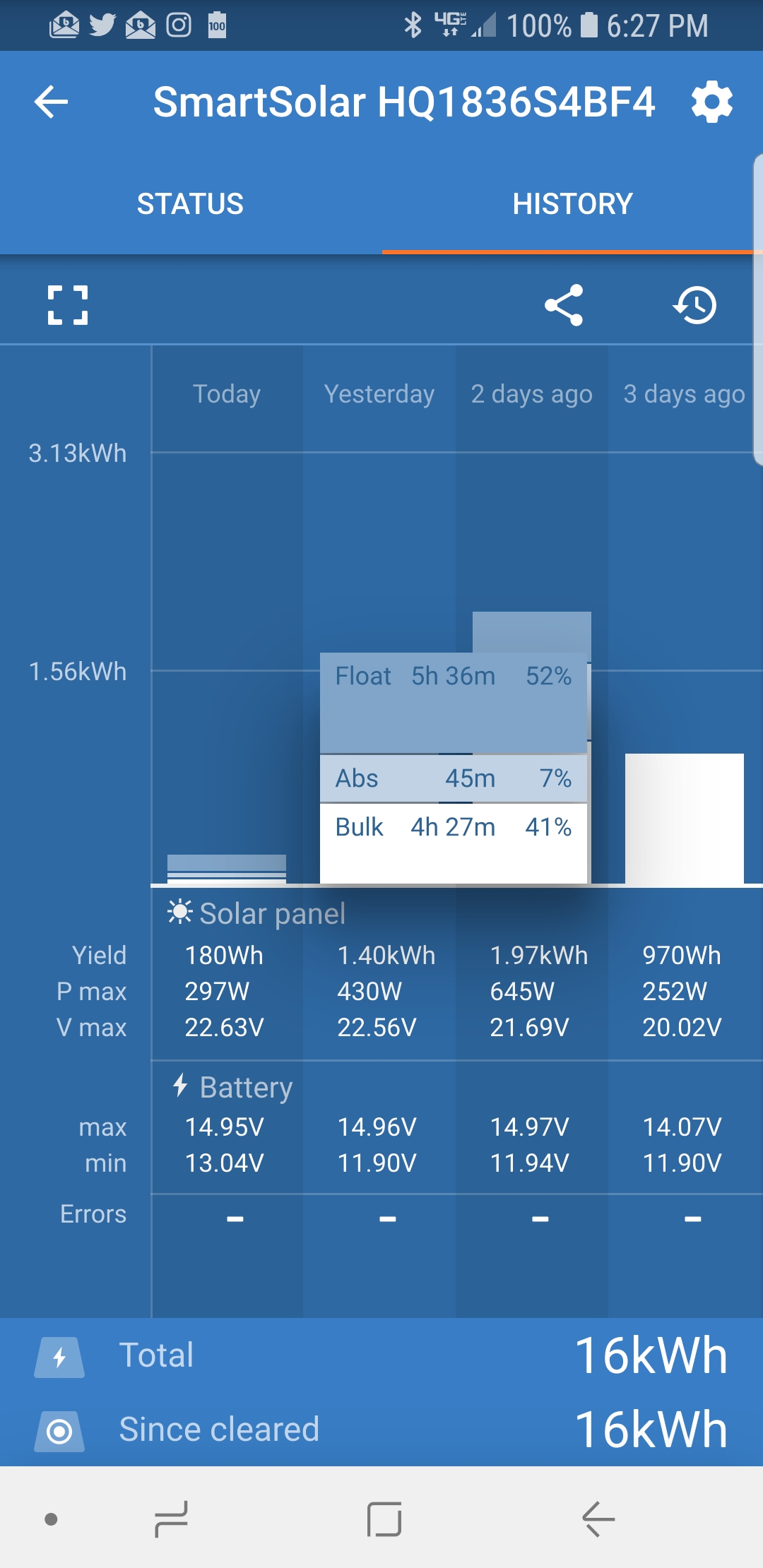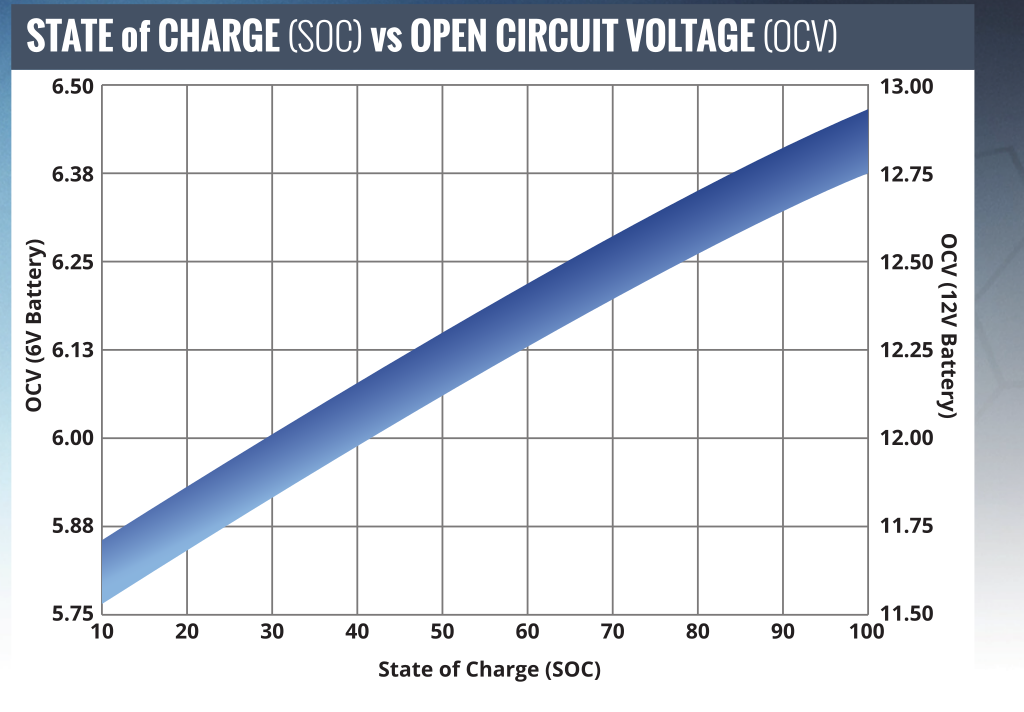Our settings: 100/50 smartsolar with 4 hr and 30 minute max absorb time and lead acid batteries.
With the above absorption time and each morning with the app showing minimum (starting?) battery volts of 11.9, the actual absorb time has been 3 hours which is what the manufacturer has suggested and the reason we set it at 4.5 (2/3 of 4.5=3).
Until today. Absorption only went for 45 minutes (1/6 of 4.5). However, we did drive for about an hour and at some point (after charging the engine battery) the alternator started to charge the coach battery as well.
The common problem we've had is when we have another charging system (like our converter) along with the solar controller, the solar controller only absorbs for 1/6 of the time. Is it resetting when this happens so it senses the battery is charged (because the volts are temporarily high from another charging source)? Why else would this stop at 1/6? Our battery monitor showed 18 amps still coming in right before this happened.



